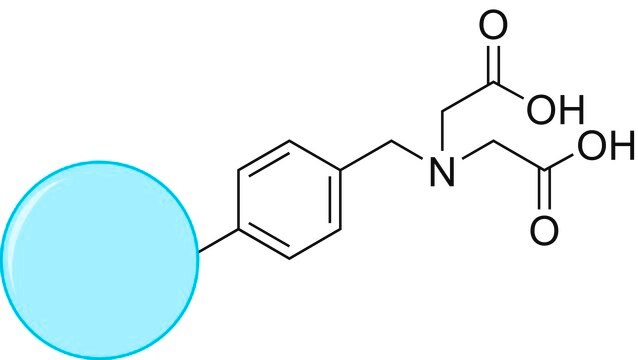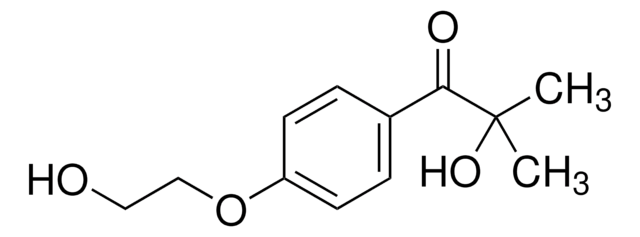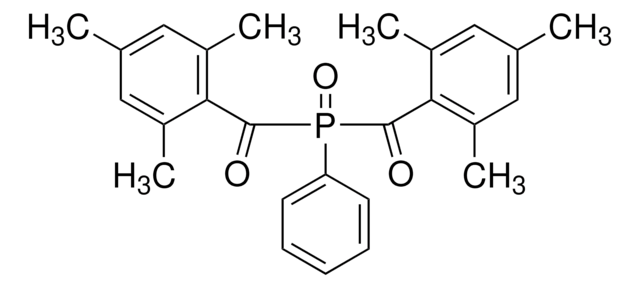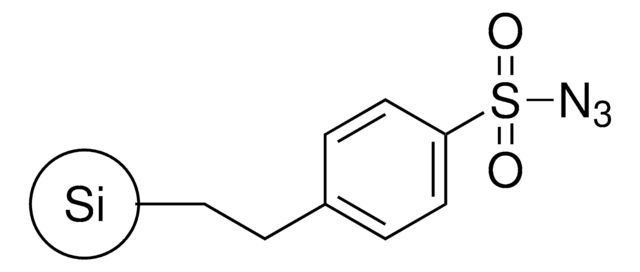おすすめの製品
製品種目
TurboBeads™
アッセイ
≥99%
フォーム
powder
組成
carbon content, ≤14 wt. %
反応適合性
reaction type: solution phase peptide synthesis
標識化の程度
SiO2 loading (Silica coating))
磁化
≥100 emu/g, mass saturation
表面積
≥15 m2/g
平均直径
≤50 nm
適合性
conforms to structure for Infrared spectrum
包装
底の開いたガラス瓶内容物は内部に挿入され接着された円錐部に入っています。
アナリシスノート
Proof of identity: metallic cobalt identity from XRD
air-stability:
weight gain in air at 400°C >20 wt.%
weight gain in air at 100°C <3 wt.%
air-stability:
weight gain in air at 400°C >20 wt.%
weight gain in air at 100°C <3 wt.%
法的情報
TurboBeads is a trademark of TurboBeads LLC
保管分類コード
11 - Combustible Solids
WGK
WGK 3
引火点(°F)
Not applicable
引火点(℃)
Not applicable
Jacinto Sá et al.
Nanoscale, 5(18), 8462-8465 (2013-07-12)
Non-magnetic Pt catalysts, supported on carbon coated magnetic Co nanoparticles, changed catalytic performance in the presence of an external magnetic field. This behavior relates to an electronic change of Pt induced by a localized magnetic field, which modifies the CO
Quirin M Kainz et al.
Chemistry (Weinheim an der Bergstrasse, Germany), 19(30), 10038-10045 (2013-06-19)
Unprecedented magnetic borohydride exchange (mBER), magnetic Wang aldehyde (mWang) and magnetic amine resins were prepared from highly magnetic polymer-coated cobalt or iron nanoparticles. Microwave irradiation was used to obtain excellent degrees of functionalization (>95 %) and loadings (up to 3.0 mmol g(-1))
Hideya Kawasaki et al.
Analytical chemistry, 84(21), 9268-9275 (2012-09-29)
Graphene-coated cobalt nanoparticles surface-functionalized with benzylamine groups (CoC-NH(2) nanomagnets) were shown to effectively enrich analytes for surface-assisted laser desorption/ionization mass spectrometry (affinity SALDI-MS) analysis. These CoC-NH(2) nanomagnets are highly suited for use with affinity SALDI-MS because their mean diameter of
Inge K Herrmann et al.
Nanoscale, 5(18), 8718-8723 (2013-08-01)
In a number of clinical conditions such as intoxication, bacteraemia or autoimmune diseases the removal of the disease-causing factor from blood would be the most direct cure. However, physicochemical characteristics of the target compounds limit the applicability of classical filtration
Vladimir Zlateski et al.
Bioconjugate chemistry, 25(4), 677-684 (2014-03-29)
In the pursuit of robust and reusable biocatalysts for industrial synthetic chemistry, nanobiotechnology is currently taking a significant part. Recently, enzymes have been immobilized on different nanoscaffold supports. Carbon coated metallic nanoparticles were found to be a practically useful support
ライフサイエンス、有機合成、材料科学、クロマトグラフィー、分析など、あらゆる分野の研究に経験のあるメンバーがおります。.
製品に関するお問い合わせはこちら(テクニカルサービス)






